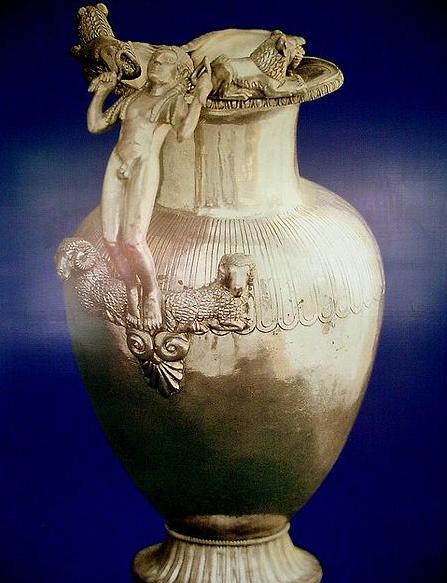Karun Treasure is the name given to a collection of 363 valuable Lydian artifacts dating from the 7th century BC and originating from Uşak Province in western Turkey, which were the subject of a legal battle between Turkey and New York Metropolitan Museum of Art between 1987–1993 and which were returned to Turkey in 1993 after the Museum admitted it had known the objects were stolen when they had purchased them. The collection is alternatively known as the Lydian Hoard. The items are exhibited in the Uşak Museum of Archaeology.
The collection made sensational news once again in May 2006 when a key piece, a golden hippocamp, on display in Uşak Museum along with the rest of the collection, was discovered to have been switched with a fake, probably between March and August 2005,[1]
Yet another term used for the collection is "Croesus Treasure". Although the artifacts were closely contemporary to Croesus, whether they should be directly associated with the legendary Lydian king or not remains debatable. Croesus' wealth had repercussions on a number of Asian cultures in a vein similar to his fame in the western cultures, and is referred to either as Qarun (Arabic) or Karun (Turkish), with the mythical proportions of his fortune also echoed in various ways, parallel to the English language expression "as rich as Croesus".[2] This explains why the term "Karun Treasure" took hold, and in any case, the king Croesus' Treasure consisted of more than 363 pieces and the tomb chamber tumulus where most artifacts were discovered (they originate from close but different sites) was that of a woman.[3]
Hi! I am a robot. I just upvoted you! I found similar content that readers might be interested in:
https://broom02.revolvy.com/topic/Karun%20Treasure
Downvoting a post can decrease pending rewards and make it less visible. Common reasons:
Submit